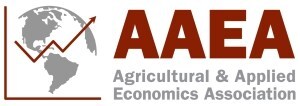New research released in JAAEA
MILWAUKEE, Oct. 14, 2025 /PRNewswire-PRWeb/ -- Rising food inflation has been a major headline in the agrifood space over the past few years. When retail meat prices are rising sharply, the public may get a distorted view of how high prices are if relying solely on Bureau of Labor Statistics (BLS) data. A new paper shows that BLS tends to report higher prices than those derived from quantity-weighted scanner data. Thus, analyses of inflation that use BLS data alone could overstate consumer cost burdens or misinterpret trends.
"What's the Price of Meat? Sources of Variation in Retail Meat Price Data and Impacts on Market Performance Analysis" is a new article in the Journal of the Agricultural & Applied Economics Association. The authors Jaime R. Luke from Michigan State University, Ted C. Schroeder from Kansas State University, Glynn T. Tonsor from Kansas State University, LaPorchia A. Collins from Tufts University, and Danielle J. Ufer from USDA Economic Research Service, ask how retail prices for meat products differ depending on if they come from publicly available BLS data or quantity-weighted proprietary retail scanner data.
The authors highlight in their study that "retail meat prices reported by BLS are almost always higher than scanner-based, quantity-weighted prices (96% of observations). Some differences widen as sales volumes increase and as retail market concentration decreases. Scanner-based retail prices suggest that farmers receive a larger share of the retail meat dollar compared to calculations using BLS prices. Price spreads (farm-to-retail, wholesale-to-retail) are smaller when calculated using retail prices from scanner data."
If you are interested in setting up an interview, please contact Allison Ware in the AAEA Business Office.
ABOUT AAEA: Established in 1910, the Agricultural & Applied Economics Association (AAEA) is the leading professional association for agricultural and applied economists, with 2,500 members in more than 60 countries. Members of the AAEA work in academic or government institutions as well as in industry and not-for-profit organizations, and engage in a variety of research, teaching, and outreach activities in the areas of agriculture, the environment, food, health, and international development. The AAEA publishes three journals, the Journal of the Agricultural and Applied Economics Association (an open access journal), the American Journal of Agricultural Economics and Applied Economic Perspectives & Policy, as well as the online magazine Choices and the online open access publication series Applied Economics Teaching Resources. To learn more, visit http://www.aaea.org.
Media Contact
Allison Ware, Agricultural & Applied Economics Association, 414-918-3190, [email protected], www.aaea.org
SOURCE Agricultural & Applied Economics Association



Share this article